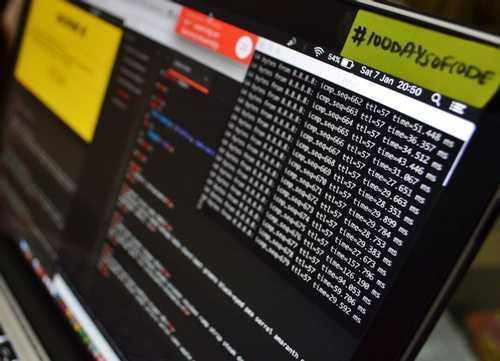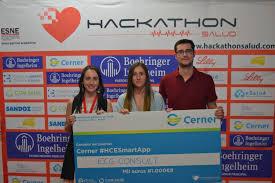How to setup and run a successful hackathon
Curated from: hackernoon.com
Ideas, facts & insights covering these topics:
9 ideas
·767 reads
1
Explore the World's Best Ideas
Join today and uncover 100+ curated journeys from 50+ topics. Unlock access to our mobile app with extensive features.
Hackathon
A hackathon is an intensive, often software-centric, ideation, prototyping and presentation challenge on known or unknown problems or opportunities.
It is a design sprint-like event in which computer programmers and others involved in software development, including graphic designers, interface designers, project managers, and others, often including subject-matter-experts, collaborate intensively on software projects”
63
215 reads
Some Benefits Of A Hackathon
- Hackathons generate actionable ideas, strategic product concepts and process improvements.
- Internal hackathons –organized within a company — provide a great way to inspire teams and promote creativity, collaboration, and innovative thinking.
- If run properly, hackathons can establish a stream of valuable ideas.
- The gamification layer on top of hackathons can further motivate and reward employees for being innovative while staying aligned with the strategy of the corporation.
56
110 reads
The Importance Of The Award
The most important though from a developer’s point of view is resources and sponsorship to drive the product/idea to the next stage. This could be the most inspiring award of all — the winners ability to use specialized resources (developers, equipment, software, services) — according to a suitable plan — and get prepared for a formal presentation of the outcome to the senior stakeholders, leaders and decision makers.
44
78 reads
The Hackathon’s ‘Run Time’
This is where teams work intensively to align their ideas, define the ‘product’, execute, review, iterate; the most exciting and creative part of the hackathon where employees forget their formal roles and titles and self-organize focusing on their mission: to create something novel and impactful.
Depending on the definition of each event, there might be a video pitch requirement, a live pitching of the idea or a live demo of the product/ prototype. In all cases the importance of effectively presenting the work done is critical.
44
57 reads
Steps To Running A Hackathon
- Announce the hackathon with clear messages and strong sponsorship from the leadership.
- Frequently and consistently communicate updates on the timeline of the event, the number of participants, the availability of the resources.
- Provide self-service tools for employees to register, create projects, explore projects, form teams, explore technologies etc.
- Assign a small team to support the process.
- Make sure that participants have dedicated time to work on their projects.
- Ensure that suitable physical space and equipment is available to all teams.
- Analyze the valid deliverables. This often comes as voting, extract analysis or consumer feedback.
- Award. Typically awards are monetary (for example a bonus), symbolic (plaques, cubes, title), or a piece of technology/device.
47
66 reads
A Hackathon’s Lead Time
Lead time is a preparation phase, from the announcement of the event to the actual ‘hack-time’. This is about communicating the event to the employees, attracting attention and enabling formal registration of interest.
Employees should have a sufficient lead time to explore ideas, technologies, teams and resources. This is an informal preparation phase which should be supported by proper tools (systems to enable employees to structure their ideas, projects, teams; communicate their effort, ask for advice or help).
40
65 reads
Success Criteria For A Hackathon
- Participation rate: The target should be set after analyzing similar events within the same corporation and consider things like timing and focus.
- Volume of Ideas.
- Percentage of Actionable Ideas: the percentage of ideas that are worth further investment from a business point of view.
- Percentage of Business opportunities: the actionable ideas that proved to be valuable business opportunities worth of further investment after post-processing.
- Percentage of IP-generating projects: those projects eligible and valuable for patent protection.
- Conversion rates: the whole batch of ideas/concepts/projects generated should be monitored as a ‘cohort’ against time. This way ideas originated from a particular hackathon event but delivering value only after a period of time, will be also measured as successful outcome.
- Opportunities for publicity: measures of ‘media attention’ from the hackathon event.
- Team impact: as captured from formal feedback processes offered by participants and stakeholders. This allows many different analysis including the effect on team dynamics and morale.
52
58 reads
Setting The Objectives Of A Hackathon
The main objective is to generate high-value actionable business ideas and product concepts. But a hackathon should also boost the innovation culture and further establish the idea-sharing, effective collaboration and creativeness driven by enthusiasm towards a shared goal.
Employees have a great opportunity to discover technologies, teams and demonstrate their skills and talents outside their typical job description; Corporations have the opportunity to identify talent, experience powerful teams being setup and capture valuable feedback.
46
61 reads
Major Attributes Defining A Hackathon
- Date, duration, lead time and venues: lead time is especially important in order to allow participants to prepare by discussing ideas, teams and collaboration scenarios.
- Participation rules: defining who can participate (for instance full-time employees from particular teams, venues etc.)
- Minimum Deliverable: the type of deliverable required for a successful submission. This is key information which can have significant impact on the participation rates.
- Context: the focus of the event in terms of technologies and problems to be solved.
- Scope: if it is an internal, company-wide or public event.
- Assessment criteria and process: the rules, priorities and processes in order to evaluate submissions.
- Award: number of winners and type of award
48
57 reads
IDEAS CURATED BY
Karter Y.'s ideas are part of this journey:
Learn more about teamwork with this collection
How to secure funding
How to market and sell your product or service
How to scale and grow your business
Related collections
Similar ideas
Read & Learn
20x Faster
without
deepstash
with
deepstash
with
deepstash
Personalized microlearning
—
100+ Learning Journeys
—
Access to 200,000+ ideas
—
Access to the mobile app
—
Unlimited idea saving
—
—
Unlimited history
—
—
Unlimited listening to ideas
—
—
Downloading & offline access
—
—
Supercharge your mind with one idea per day
Enter your email and spend 1 minute every day to learn something new.
I agree to receive email updates





